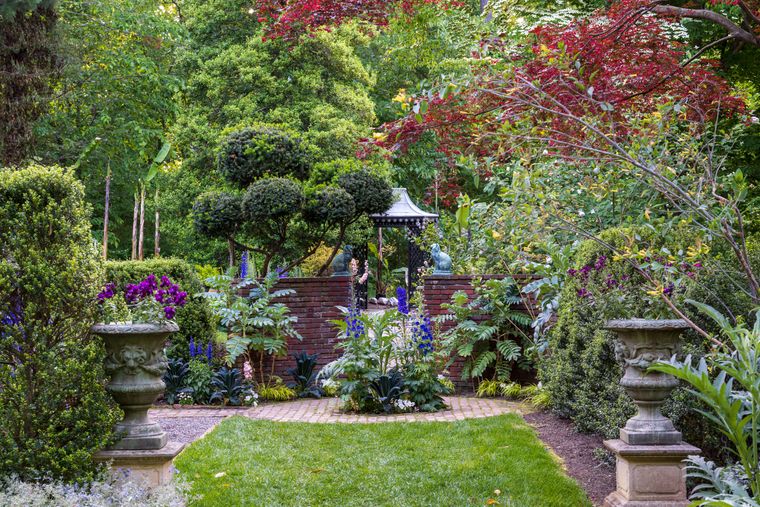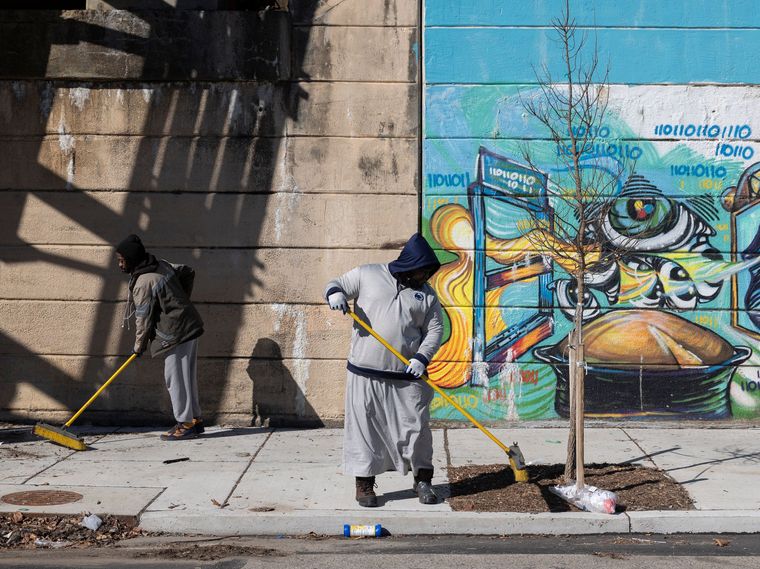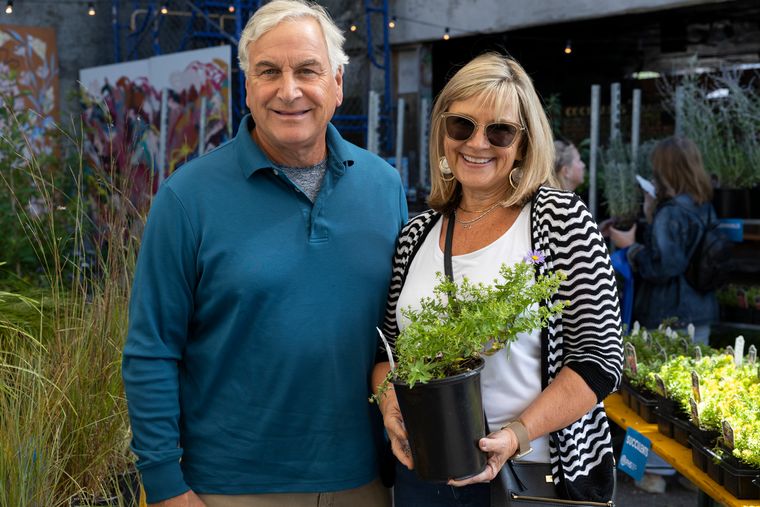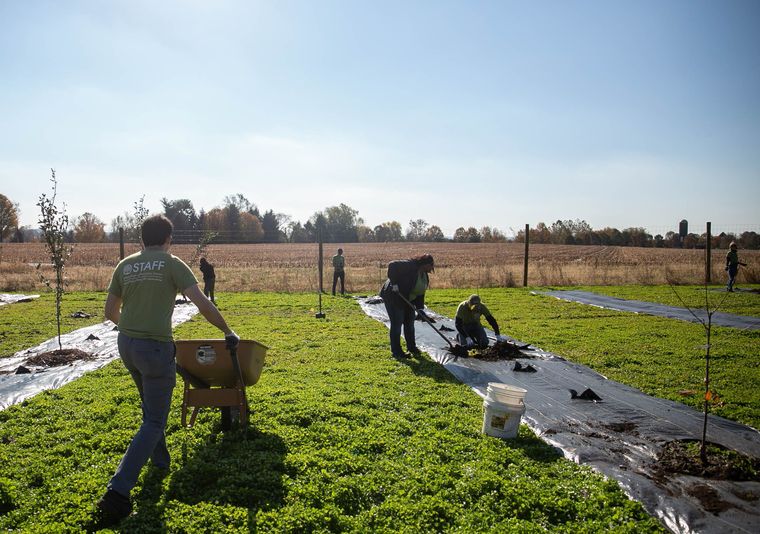



How to Make a Flower Bouquet Sustainably
sustainable gardening
gardening projects

By Andrew Bunting, PHS VP of Horticulture
With Valentine’s Day coming soon, it is a perfect opportunity to give your loved one something natural, sustainable, and beautiful. Instead of traditional cut flowers, consider creating your own flower bouquet using plants from your garden or choosing something that can be re-potted and enjoyed year-round. The following will cover some environmentally-friendly choices for gifts on Valentine’s Day, including how to make a flower bouquet using sustainable options, from foraging to growing your own plants.
Get inspired and learn about sustainable gardening at the Flower Show—purchase your tickets today!

How to Make a Sustainable Flower Bouquet: Grow, Forage, and Give Back to Nature
Many plants from your garden can be harvested to make a stunning Valentine’s Day bouquet. Start with holly varieties that embody the colors of Valentine’s Day. The American holly, Ilex opaca, is an evergreen with vibrant red berries, while the English holly, Ilex aquifolium, and Altaclere holly, Ilex x altaclerensis, offer attractive, shiny leaves and berries. For added pop, the native winterberry, Ilex verticillata, offers abundant red fruits, and cultivars like ‘Winter Red’ and ‘Maryland Beauty’ are especially eye-catching.
If you live in a mild climate, red-flowering witch hazels like Hamamelis x intermedia ‘Diane’ or ‘Brigit’ bloom with red, spider-like flowers that are perfect for a winter bouquet. Red-stemmed dogwood, such as ‘Sibirica,’ Arctic Fire®, also bring a bold vertical element to your arrangement. Wintersweet, Chimonanthus praecox adds a sweet fragrance to complete your bouquet.
Don’t forget about paperwhites! These fragrant daffodils can be grown in pots and make a beautiful addition to a Valentine’s Day bouquet. To enhance your arrangement, consider foraging for attractive seed heads or spent flowers that add texture and visual interest.
Once arranged in a vase, replace the water weekly to keep your bouquet fresh. Depending on your selection, your arrangement could last up to a month—especially if you use hardy plants like hollies and red-stemmed dogwood. When your bouquet begins to dry out, compost the remnants to further reduce waste.
Harvesting plants from your garden for a Valentine’s Day bouquet is not only a creative way to give a meaningful, handmade gift, but it’s also a more sustainable option than buying store-bought flowers. Commercially grown cut flowers often come with a high carbon footprint due to the use of fossil fuels, pesticides, and long-distance transportation.

Sustainable Valentine's Day Gifts: Potted Plants to Grow and Enjoy
In addition to creating flower bouquets, consider gifting potted plants that can be enjoyed year-round. One popular option are the hellebores, Helleborus, Christmas rose or Lenten rose. While their common name might suggest a rose, they are not a rose at all, but a woodland perennial with myriad-colored flowers that can start flowering in the winter depending on your location in the country. Hellebores are also forced to flower throughout the winter and can make an excellent Valentine’s Day gift. Varieties like ‘Rio Cardinal’, ‘Romantic Gateway’, and ‘True Love’ come in shades of red, which make them even more fitting for this romantic holiday. After the hellebores finish flowering in the house, they should be watered occasionally and then in the early spring they can be planted into the garden. Hellebores are a great addition to the woodland garden and are also deer resistant.

Heart-Shaped Houseplants: A Trendy Gift for Valentine's Day
Another fun and sustainable Valentine's Day gift is a heart-shaped houseplant. Houseplants have become increasingly popular in recent years, and many varieties feature heart-shaped leaves or flowers that are perfect for celebrating love and add beauty to the home all year long. Here are a few heart-shaped houseplants to consider:
- The flamingo flower, Anthurium is a type of tropical plant with skyward facing, heart-shaped flowers. ‘Caliente’ has bright red, heart-shaped flowers. Anthurium magnificum Michelle® is grown for its heart-shaped leaves. The leaves are dark purple with stunning pink veins. Like other members of the aroid family, it thrives in medium light and moisture.
- The pothos or Epipremnum have lustrous heart-shaped leaves. New introductions include Beautifall®Marble Queen and Beautifall®Hawaiian. Many other aroids including Philodendron, Alocasia, and Monstera also have heart-like leaves.
- The sweetheart plant, Hoya kerrii is a succulent that becomes a vine with very distinctive heart-shaped leaves. Like other succulents, it prefers bright light, well-drained soil, and minimal water.
- The peperomias are a large group of rosette-forming houseplants that tolerate a lot of shade and are often used in terrariums. Most selections and species of Peperomia have very decorative heart-shaped leaves.

The Eco-Friendly Benefits of Sustainable Valentine’s Day Gifts
All these gift ideas for Valentine’s Day are sustainable ways to help reduce your carbon footprint while offering something unique and creative for your loved ones. Growing your own plants for a bouquet contributes to supporting local biodiversity and local ecosystems. Re-using potted plants as perennials in the garden or adding a new houseplant to your collection also helps reduce waste that comes from buying potted plants that have no use after the holidays or gifting store-bought bouquets that often come with a hefty carbon footprint.
This Valentine’s Day, take the opportunity to be creative and sustainable with your gifts. Whether you’re creating a flower bouquet from your garden, gifting a potted perennial, or choosing a heart-shaped houseplant, you’ll be showing your love not only for the recipient but also for the planet.


